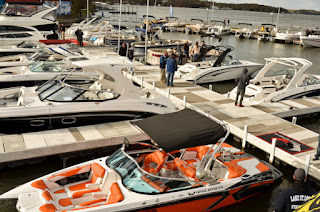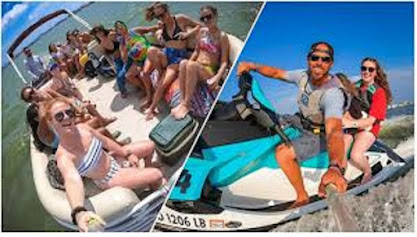Boat Charters Legal Part 1
The OUPV/Six-pack licenses are issued in three forms:
- An inland license allowing the holder to operate commercially on bays, sounds, rivers, and lakes
- A Great Lakes and inland license: this license allows you to operate on both the Great Lakes and inland waterways
- A near coastal license: this permits you to operate on both inland waterways as well as near coastal waters out to 100 miles offshore.
Commercial charter, is typically performed on a boat that has passed a specific set of criteria and will carry more than 6 paying passengers and crew. As well as it has been issued a Certificate of Inspection (COI). and the captain will hold a Masters tonnage rating, for the size, type of vessel. Example 25 ton, 50 ton, 100 ton and up.
Bare Boat Charter: is A bareboat charter contract may not provide or dictate a crew. The charterer must be able to select a crew and have the ability to discharge the crew. The charterer is not considered a passenger, and there can only be one charterer, even though the vessel may be have several individuals.
Simply put a individual (charterer) rents a boat, they have a rental agreement with the owner of the boat. the charterer take on all responsibility ( cost of fuel, damage, and liability personal and property. etc. ) while they ae in possession of the vessel. The charterer may hire a operator (Captain) of the vessel, but must have a choice of captain to hire and fire captain. The owner of the vessel that rents the boat may not be on board nor act as captain. There must be a written agreement between the charterer and the captain. That captain may hold a OUPV credential.
As always there are questions to regulations. in attempt to clarify the USCG Upper Sector Mississippi River issued the following to common questions.
Can
a vessel of any size, without a COI, carry more than 6 paying passengers?
·
If
the vessel is less than 100 gross tons, then No (see compliance matrix on pg 2).
However, in certain conditions, a chartered vessel may carry more than 6 passengers.
There is no formal USCG document that designates a vessel as a “Bareboat
Charter” and thus able to carry up to 12 non-paying passengers without a COI. This is why it is important for the persons chartering
the vessel to have an official contract in place with the vessel owner stating
the stipulations of use.
Can a fiberglass V
hull or any vessel obtain a COI, and what are the requirements?
·
Any
vessel that is able to meet the requirements of the applicable subchapter can
hold a COI. Most vessels built and sold
as recreational vessels ‘off-the-shelf’ will not meet the requirements for a
COI. For specific requirements on small
passenger vessels, refer to 46 CFR Subchapters T and K. A guide to obtaining a COI under these
subchapters is also available by contacting the Sector Upper Mississippi River Marine
Inspections office at Marine.Inspectors@uscg.mil.
If you have a
Master’s license (25, 50, or 100 ton), does that allow you to have more than 6
passengers on a vessel without a COI?
·
Not
if carrying passengers for hire. COI requirements for the vessel are a separate
issue from licensing of the operator. Regulations are clear that a vessel under
100 gross tons carrying more than 6 passengers must have a COI to operate if
one of more passengers is paying.
·
Persons
holding a Master’s license can become the Captain of a bareboat charter
carrying up to 12 non-paying passengers. However, that vessel may not belong to
the Captain, nor can their employment as the Captain of that vessel be a contract
stipulation.
·
The
number of persons on a vessel, regardless of payment, crew or COI status, is
always limited by the safe load limits based on construction and design of the
vessel. Meaning, max load could be less than 12.
What is an OUPV,
and what limits are there to charters?
·
Stands
for “Operator of Uninspected Passenger Vessels.” This credential endorsement allows the holder
to operate vessels carrying up to 6 passengers, at least one of whom has paid
compensation to be onboard.
·
This
operation is typically referred to as a “Six Pack.” The vessel is not required to be inspected by
the USCG and does not need a COI.
·
Requirements
for UPV include:
o
Vessel
must be operated by a mariner with a USCG issued Merchant Mariner Credential
endorsed as OUPV.
o
Vessel
operator’s marine employer must have a bona fide drug testing program in place.
o
Vessel
must meet federal vessel safety standards including fire safety, lifesaving,
navigation, and pollution prevention, depending on the vessel type, size, and
operation.
o
Chartered
vessels (other than bareboat) have passenger limits of 6 for vessels under 100
tons.
§ If 1 passenger pays compensation, all passengers onboard count towards the limit whether paying or not.
What is a bare
boat charter? What are the requirements?
·
A
bareboat charter is when the customer, referred to as the charterer, takes over
full operation and management rights of the vessel. The agreement needs the
following elements:
o
The charterer must have the option of selecting the crew. Although a master or crew may be furnished
by the owner, full possession and control of the vessel must be vested in the charterer.
A vessel chartered with crew provided IS NOT a bareboat charter.
o
The payment for the master and crew, food, fuel, stores, port charges, fees and all costs associated with operating the chartered vessel for the
stipulated time of the charter are paid by the charterer.
o
Insurance is obtained by the charterer, at least to the extent of covering liability not included in the owner’s insurance. A greater
indication of full control in the charterer is shown if all insurance
is carried by the charterer (of course, the owner retains every right to protect his or her interest in the vessel).
o
The charterer may discharge, for cause, the master or any crew member without referral to the owner.
o
The vessel is to be surveyed upon its delivery and return.
o
Without
exception, to meet the regulatory conditions of a legal bareboat charter, the
owner(s) or ANY person(s) holding ANY financial interest in the vessel (e.g. -
LLC, owner’s spouse, etc.) shall not be onboard in ANY capacity (e.g. –
captain, crew, passenger, etc.)
The Coast Guard urges anyone paying for a trip on a passenger vessel to verify that their captain has a safety plan and a Merchant Mariner Credential. For larger charter boats, ask to see a Coast Guard issued Certificate of Inspection. If the operator cannot produce appropriate credentials, passengers should not get on the boat.





Comments
Post a Comment